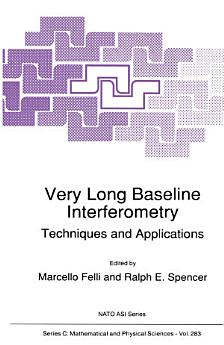Very Long Baseline Interferometry: Techniques and Applications
Marcello Felli · Ralph E. Spencer
Dec 2012 · Nato Science Series C Book 283 · Springer Science & Business Media
Ebook
438
Pages
reportRatings and reviews aren’t verified Learn More
About this ebook
The quest for high resolution has preoccupied radio astronomers ever since radio waves were first detected from space fifty years ago. This venture was par ticularly stimulated by the discovery of quasars, and led to the development of interferometer techniques using baselines of transglobal dimensions. These meth ods have become known as Very Long Baseline Interferometry (VLBI). Arrays of radio telescopes situated all over the Earth (or even in space) are regularly used for researches in radio astronomy, reaching resolutions as small as a fraction of a milli arcsecond. The technique also allows the measurement of the positions of the radio telescopes to a few millimeters and so VLBI has become a major tool in geodesy and the study of the rotation of the Earth. VLBI has now passed the pioneer stage and is becoming a standard facility available to astronomers and geodesists, requiring the coordination of the operations of indpendently owned radio telescopes around the world. In Europe observatories from England, Federal Republic of Germany, France, Italy, Poland, Sweden and The Netherlands are coordinated in their VLBI activity by the European VLBI Network Consortium (EVN). The Programme Committee of the EVN allocates time to scientific projects on a routine basis three times a year. The Unites States has a similar arrangement of a network of independent radio observatories, and joint experiments using 'Global Network' are often made.
Rate this ebook
Tell us what you think.
Reading information
Smartphones and tablets
Install the Google Play Books app for Android and iPad/iPhone. It syncs automatically with your account and allows you to read online or offline wherever you are.
Laptops and computers
You can listen to audiobooks purchased on Google Play using your computer's web browser.
eReaders and other devices
To read on e-ink devices like Kobo eReaders, you'll need to download a file and transfer it to your device. Follow the detailed Help Center instructions to transfer the files to supported eReaders.








